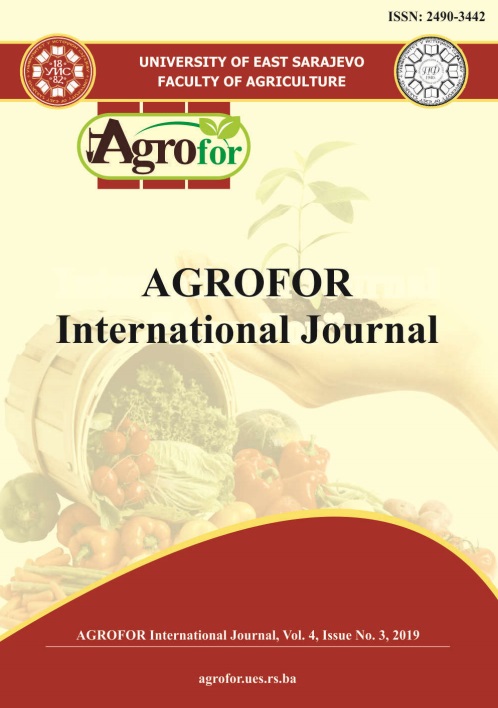INFLUENCE OF INTERCROPPING MAIZE WITH CLIMBING BEAN ON FORAGE YIELD AND QUALITY
DOI:
https://doi.org/10.7251/AGRENG1903060UAbstract
Maize forage is poor in protein content which shows its low quality and nutritive value. Regarding to high feed costs of protein supplementations, legumes can be used in livestock nutrition for their high protein content and, thus, providing cost savings. Since legumes have low dry matter yield, acceptable forage yield and quality can obtained from intercropping cereals and legumes compared with their sole crops. In this study, maize (Zea mays L.) and climbing bean (Phaseolus vulgaris L.) were intercropped in different sowing densities and their monocropping equivalents were tested to determine the best intercropping system on forage yield and quality. Maize was cultivated alone (75 000 plants ha-1) and intercropped with bean as follows: 75 000 plants ha-1 of maize and 37 500 plants ha-1 of bean (MB1), 75 000 plants ha-1 of maize and 50 000 plants ha-1 of bean (MB2) and 75 000 plants ha-1 of maize and 75 000 plants ha-1 of bean (MB3), in rows alternating with maize. The highest dry matter yield was produced by MB3 (20.9 t ha-1), and the lowest by maize (16.9 t ha-1). All intercropped systems had higher crude protein contents, MB1 (92 g kg-1 DM), MB2 (99 g kg-1 DM) and MB3 (110 g kg-1 DM), than the maize (77 g kg-1 DM). Intercropping of maize with bean reduced neutral and acid detergent fiber, resulting in increased forage digestibility. Therefore, maize intercropping with bean could substantially increase forage quantity and quality, and decrease requirements for protein supplements as compared with maize.

